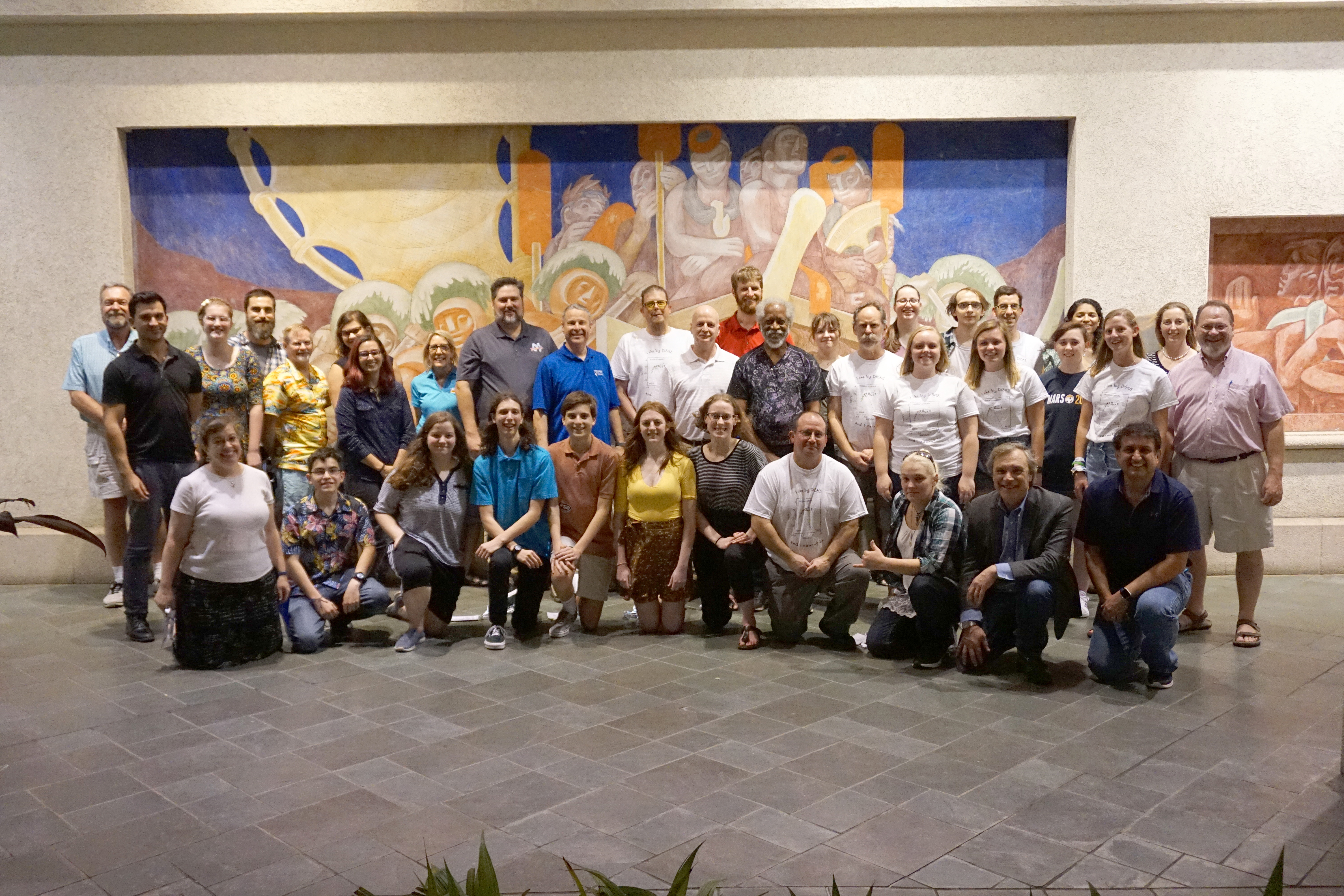
High school teachers and students doing real astronomy research? Absolutely!

Once again, nearly 30 teachers, students and astronomy educators from the NASA/IPAC Teacher Archive Research Program (NITARP) will be attending the winter meeting of the American Astronomical Society (AAS), running from January 4 through January 8 in Honolulu, HI.
For over a decade, NITARP has partnered small groups of educators with a research astronomer for original, year-long, authentic research projects. At the AAS meeting, the educators from the 2019 class, along with some of their students, are presenting the results of their work over the past year. Meanwhile, the educators from the 2020 class are meeting their teams and getting started on their own projects.
From NITARP’s early years through the 2020 class, a total of 124 educators from 38 states have participated or will participate; this year sees our first participant from South Carolina. NITARP works with educators because, through them, NITARP reaches thousands of students per year with information about how science really works, what NASA does, and the wealth of astronomy data that is freely available to the public.
Here are the teams that are presenting posters at the AAS meeting this week:
2019 team working with Dr. Varoujan Gorjian (JPL/IPAC):
- Vin Urbanowski (Academy of Information Technology & Engineering, Stamford, CT) – mentor teacher for the team
- Andrea Galloway (Thomas Jefferson High School, Council Bluffs, IA)
- Geoff Holt (Madison Metropolitan School District Planetarium, Madison, WI)
- Noah Kearns (Mitchell High School, Mitchell, IN)
This team made use of Spitzer Space Telescope data obtained from the entirety of the cryogenic-era – that is, from the first 5.5 years of the Spitzer mission. They then combined it with data from the Gaia spacecraft to look for objects around our Galaxy with unusually high infrared luminosity.
2019 team working with Dr. Luisa Rebull (IPAC):
- David Strasburger (Lawrence Academy, Groton, MA) – mentor teacher for the team
- Michael Bechtel (Wartburg College, Waverly, IA)
- Danny Mattern (Butler Community College, El Dorado, KS)
- Bob Swanson (Mississippi State University, Starkville, MS and Itawamba Community College, Tupelo, MS)
This team looked for young stars in a region called M8, the Lagoon Nebula. They assembled a catalog from 36 different papers or surveys and identified ~3200 young stars from the literature; they used the properties of those known young stars in up to 67 different optical and infrared bands to identify 185 new young star candidates.
The 2019 educators will now go on to conduct at least 12 hours of professional development for their colleagues in their schools and communities, at the local, regional, and national levels, in print and in person.
NITARP is announcing today the 2020 class of educators and their teams, as follows:
2019 team working with Dr. Varoujan Gorjian (JPL/IPAC):
- David Strasburger (Lawrence Academy, Groton, MA) – mentor teacher for the team
- Neal Boys (George S. Parker High School, Janesville, WI)
- Alyssa McElroy (Houston Middle School, Amarillo, TX)
- Raghida Sharif (KIPP NYC College Prep High School, Bronx, NY)
- David Temple (Longview High School, Longview, TX)
2019 team working with Dr. Luisa Rebull (IPAC):
- Vin Urbanowski (Academy of Information Technology & Engineering, Stamford, CT) – mentor teacher for the team
- Robert Anderson III (JL Mann High School, Academy of Mathematics, Science, and Technology, Greenville, SC
- Brandon Rodriguez (Crescenta Valley High School, La Crescenta, CA)
- Benjamin Senson (James Madison Memorial High School, Madison, WI)
They will present their results, with their students, at the 2021 AAS winter meeting to be held in Phoenix, AZ.
IPAC, based at Caltech, in Pasadena, CA, is leading this program. These teams use archival data from the Spitzer Space Telescope (part of the Spitzer Heritage Archive, SHA), the NASA/IPAC Extragalactic Database (NED), the NASA Exoplanet Archive, the NASA/IPAC Infrared Science Archive (IRSA), all of which are based at IPAC, and other NASA archive holdings. Funding comes from the NASA Astrophysics Data Program.
- Date: January 7th, 2020
- Category: Project News
- View Image
- Image Caption: NITARP participants from the classes of 2019 and 2020, plus self-funded alumni from past classes, at the January 2020 American Astronomical Society meeting in Honolulu, HI.


